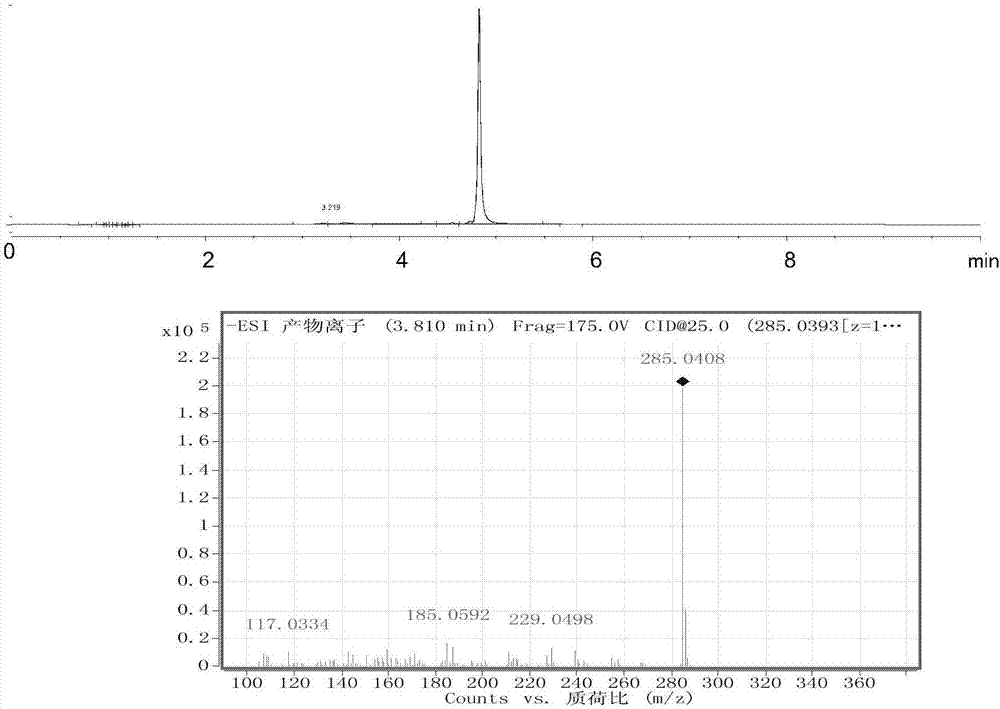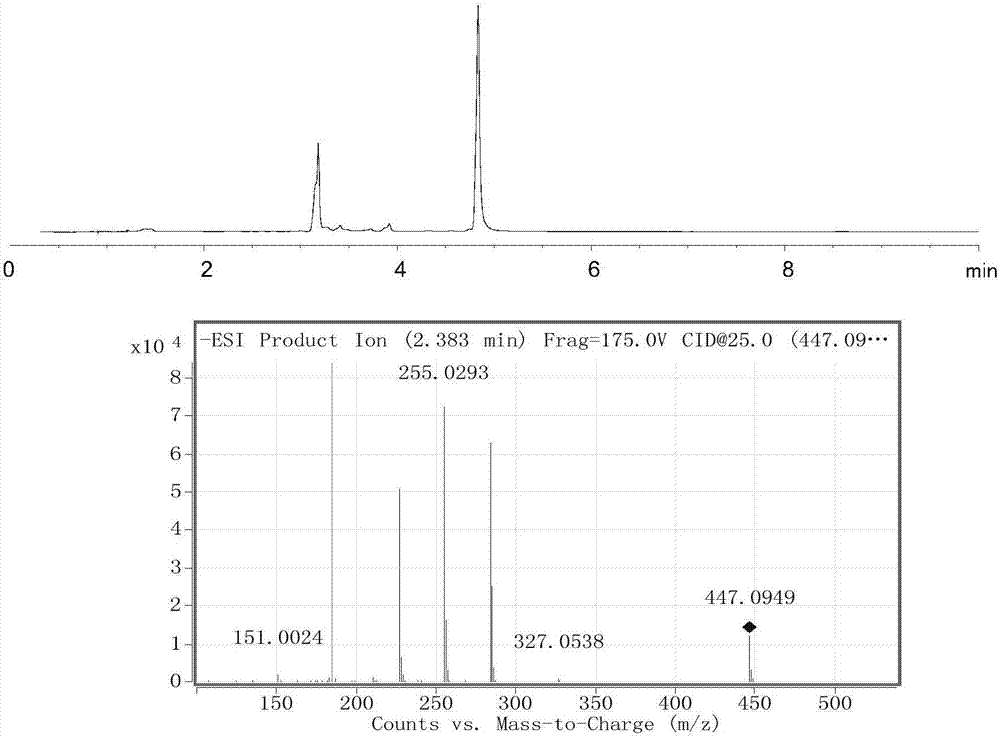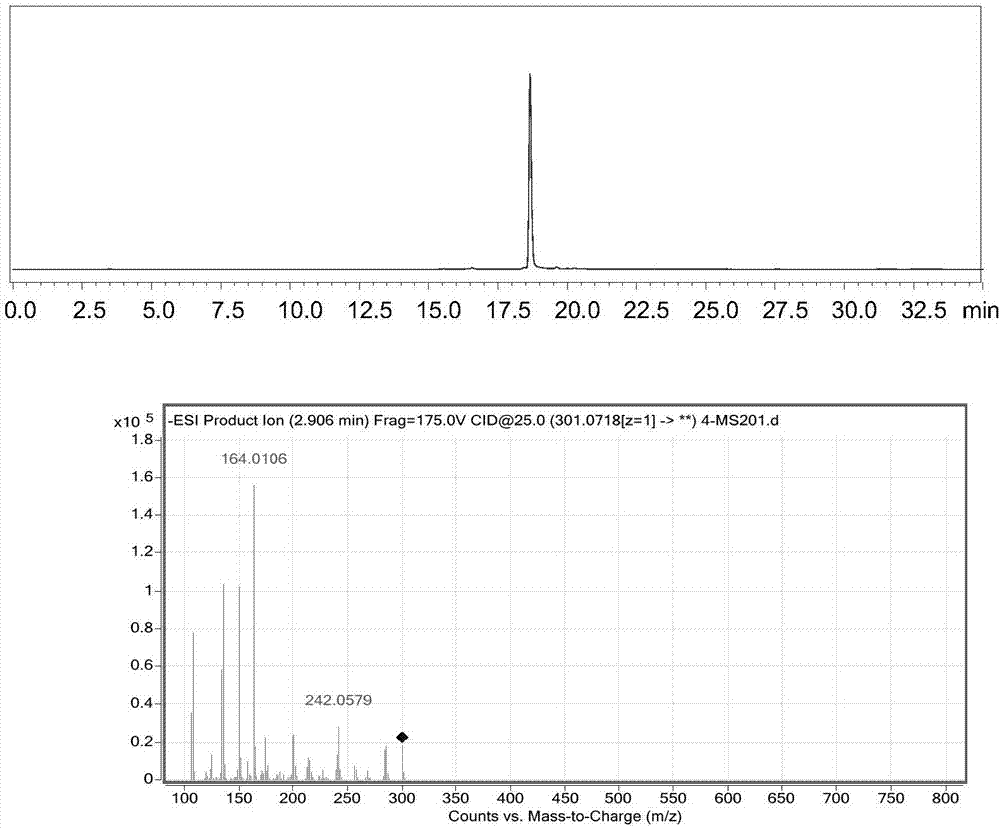Glucosyltransferase gene capable of participating in biosynthesis and biotransformation post modification
A glucosyltransferase and biotransformation technology, which is applied in the direction of transferase, plant gene improvement, biochemical equipment and methods, etc., can solve the problems of non-single product, low conversion efficiency, and inability to achieve directional transformation, etc.
- Summary
- Abstract
- Description
- Claims
- Application Information
AI Technical Summary
Problems solved by technology
Method used
Image
Examples
Embodiment 1
[0082] Example 1 Synthesis of glucosyltransferase BbUGT86, and construction of yeast expression vectors to obtain yeast transformants
[0083] Sequencing the genome of a strain of Beauveria bassiana obtained, and obtained the genome sequence of the strain. During the process of analyzing glycosyltransferases through relevant bioinformatics software, a UDP-glucosyltransferase gene was found by comparison. We named the glucosyltransferase gene BbUGT86. The nucleotide sequence of BbUGT86 was predicted and analyzed by various software to remove the intron splicing to obtain the coding region sequence of BbUGT86. Extract the RNA of Beauveria bassiana and obtain cDNA by reverse transcription, use the designed primers to amplify the coding gene of BbUGT86, recover the target fragment and send it to the sequencing company for sequencing and comparison, and obtain the glycosyltransferase shown in SEQ ID NO.1 Gene BbUGT86.
[0084] Restriction sites are introduced during synthesis. A...
Embodiment 2
[0088] Example 2 Application of glucosyltransferase recombinant vector PRS425m-BbUGT86 to realize modification of polyketide Desmethyl-Lasiodiplodin (compound 1)
[0089] 1. Purpose of the experiment
[0090] The metabolites modified by glucosyltransferase were separated by HPLC and their molecular structures were analyzed.
[0091] 2. Experimental method:
[0092] 1) Fermentation culture
[0093] Adopt two-step fermentation technology, first inoculate an appropriate amount of yeast transformant cells into the corresponding 25ml - In Leu liquid deficient medium, culture at 30°C and 200r min-1 for about 16h, then add 25ml of YPD low-sugar medium, and add 5mg of pure Desmethyl-Lasiodiplodin at the same time to continue culturing for 48h; extract the fermentation product with ethyl acetate, ethyl acetate The ratio of ester to fermentation broth is 1:1, that is, 50ml of ethyl acetate is used to extract the fermentation product; the rotary evaporator recovers the dry extract of ...
Embodiment 3
[0111] Example 3 Application of glucosyltransferase recombinant vector PRS425m-BbUGT86 to realize the modification of flavonoids
[0112] 1. Purpose of the experiment
[0113] The metabolites obtained after glucosyltransferase modification of flavonoids were obtained by HPLC high-performance liquid phase separation and their molecular structures were analyzed.
[0114] 2. Experimental method:
[0115] 1) Fermentation culture
[0116] Adopt two-step fermentation technology, first inoculate an appropriate amount of yeast transformant cells into the corresponding 25ml - In the Ura liquid deficient medium, cultured at 30°C and 200r min-1 for about 16 hours, then added 25ml of YPD low-sugar medium, and added 5mg of different flavonoids to continue culturing for 48 hours. A total of 20 flavonoid samples were used;
[0117] Extract the fermentation product with ethyl acetate, the ratio of ethyl acetate to fermentation broth is 1:1, that is, extract the fermentation product with 50ml...
PUM
 Login to View More
Login to View More Abstract
Description
Claims
Application Information
 Login to View More
Login to View More - R&D
- Intellectual Property
- Life Sciences
- Materials
- Tech Scout
- Unparalleled Data Quality
- Higher Quality Content
- 60% Fewer Hallucinations
Browse by: Latest US Patents, China's latest patents, Technical Efficacy Thesaurus, Application Domain, Technology Topic, Popular Technical Reports.
© 2025 PatSnap. All rights reserved.Legal|Privacy policy|Modern Slavery Act Transparency Statement|Sitemap|About US| Contact US: help@patsnap.com



